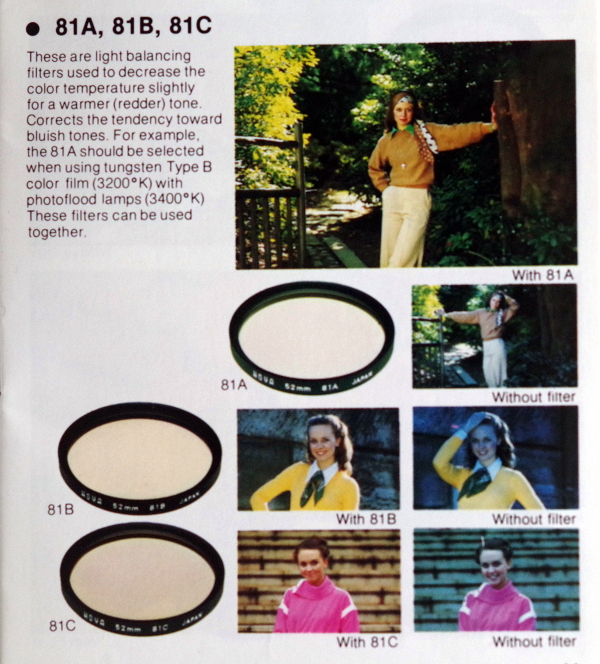For those interested...............
There were two series of Wratten filters in the 8X series which were used for color temperature ("color correction") adjustments. The 81 series were warming filters (yellowish) and decreased the apparent color temperature while the 80 series were cooling filters (blueish) and increased the apparent color temperature. The letter designated the strength of the filter. There were different "tungsten" sources, so the appropriate color correction filter needed to be matched to the light source. Many early (and some current) flashes tended to be a bit "cool" thus needing a warming filter on the lens. There were some other 8X filters (the 82 and 85 filters) which were similar but not as well specified for color correction uses (and then there were some 8X filters not at all associated with color correction).
As mentioned, this was a film issue since the color temperature a film was made for was unchangeable once the film was produced. The need for these filters with digital photography has all but disappeared. One good use still remains, and that is to make the color temperature of a flash match the ambient color temperature (usually gel filters) since many scenes can still be illuminated by "tungsten" lighting. (Sometimes ambient tungsten lighting is made to match other non-tungsten lighting with lamp wraps of cooling gels.)
The 81A filter is a slight warming filter which was used with 3400K sources and "tungsten" film (the latter balanced for 3200K), since the 3400K could look a little cold (blue) without this filter. Oh, how complicated in those days................
For a complete list of Wratten filters including the aforementioned, check here:
https://en.wikipedia.org/wiki/Wratten_number 

 Similar Threads
Similar Threads 
















 Post #5 by Bob 256
Post #5 by Bob 256








